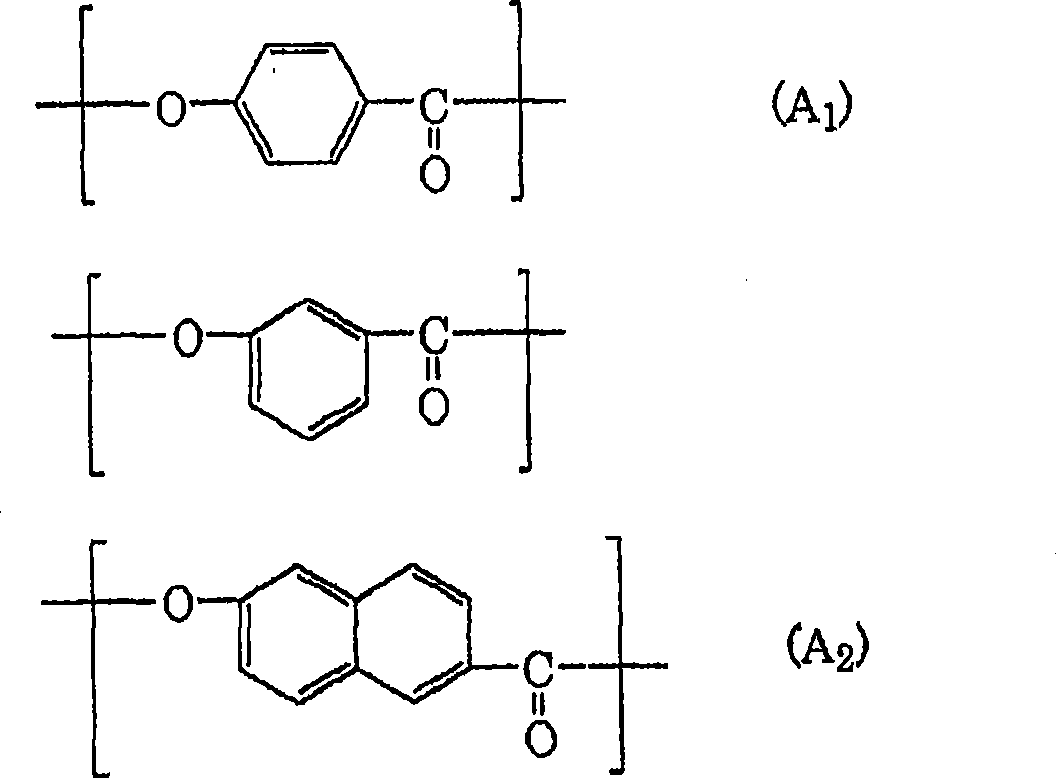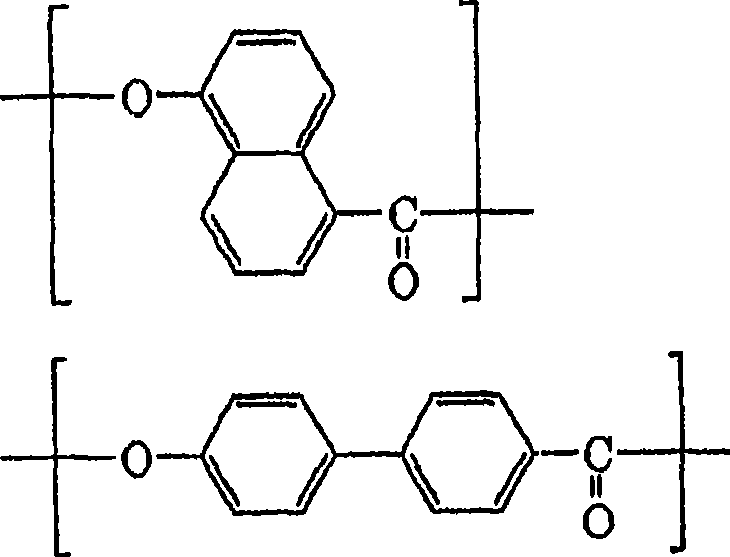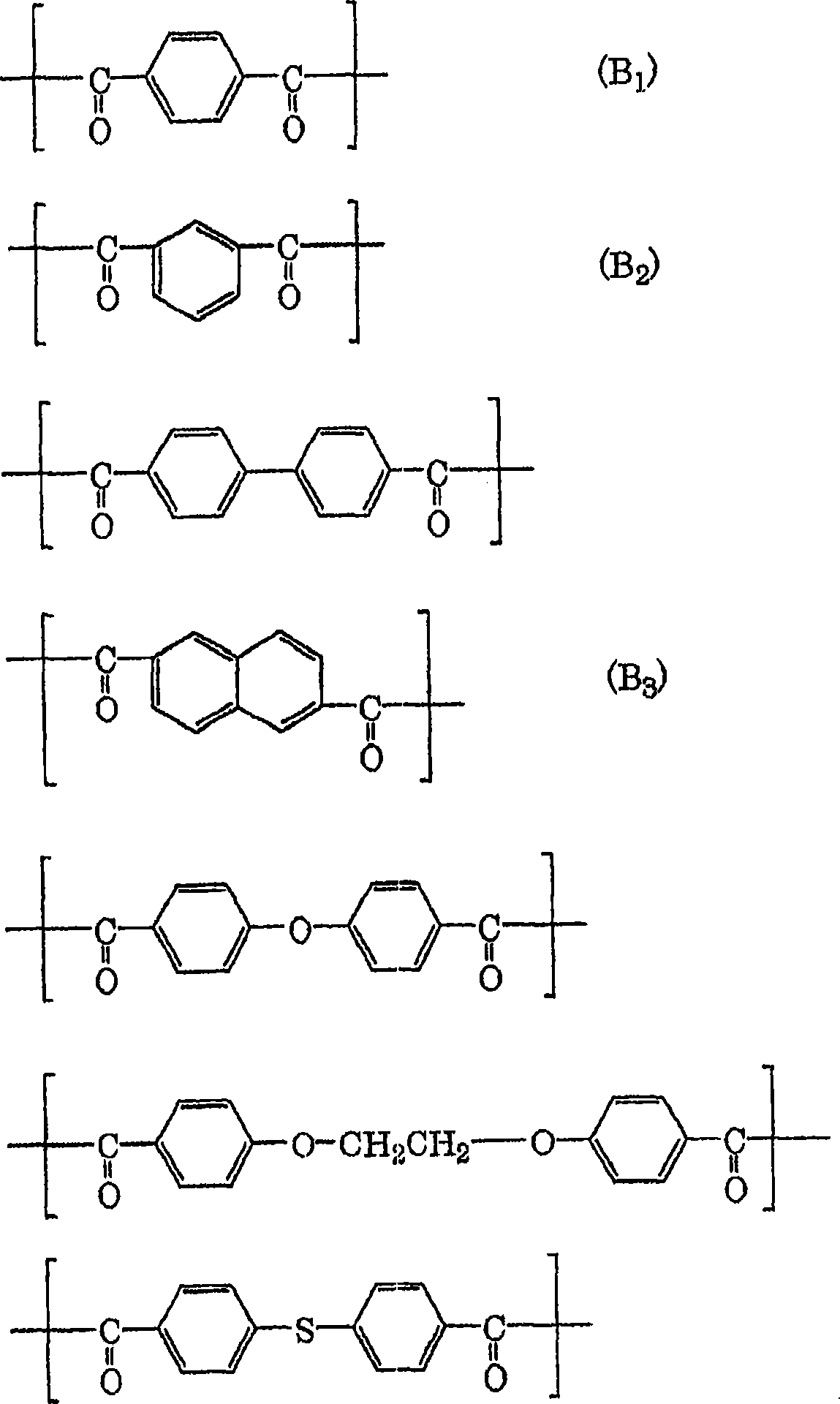Reflection plate and light emitting device
A technology for light-emitting devices and reflectors, applied in reflectors, lighting devices, components of lighting devices, etc., to achieve the effects of excellent heat resistance and excellent reflectivity
- Summary
- Abstract
- Description
- Claims
- Application Information
AI Technical Summary
Problems solved by technology
Method used
Image
Examples
Embodiment 1
[0131] In a reactor equipped with a stirrer, torque meter, nitrogen inlet tube, thermometer and reflux condenser, 994.5 g (7.2 mol) of p-hydroxybenzoic acid, 446.9 g (2.4 mol) of 4,4'-bis Hydroxybiphenyl, 299 g (1.8 mol) of terephthalic acid, 99.7 g (0.6 mol) of isophthalic acid and 1347.6 g (13.2 mol) of acetic anhydride, and 0.2 g of 1-methylimidazole were added. After the atmosphere in the reactor was sufficiently replaced with nitrogen and heated to 150°C in 30 minutes under nitrogen flow, the mixture was refluxed for 1 hour while maintaining the temperature.
[0132] 1-Methylimidazole (0.9 g) was added and, thereafter, heated to 320° C. over 2 hours and 50 minutes while distilling off acetic acid and unreacted acetic anhydride produced as by-products. After the reaction was complete, ie after confirming the increase in torque, a prepolymer was obtained.
[0133] The formed prepolymer was cooled to room temperature, ground by a coarse grinder, heated from room temperature...
Embodiment 2-5 and comparative Embodiment 1-6
[0136] The liquid crystal polyester 1 used in Example 1 was mixed with various fillers at the mixing ratio shown in Table 1 to obtain a resin composition. Reflection plate samples have been obtained in the same manner as in Example 1, and various measurements have been performed. The results are shown in Table 1 and Table 2.
[0137] Table 1
[0138]
[0139] Table 2
[0140]
[0141] As shown in Table 1, compared with the sample without the silica-based filler (component (C)) added thereto (see Comparative Examples 1-5), all components (A)-(C ) samples showed higher reflectivity (see Examples 1-5). It was found that although a sample with high reflectance could be obtained by using a large amount of titanium dioxide filler (see Comparative Example 2), the sample had sharply degraded heat resistance when soldered. In the samples containing glass-made fillers (glass beads) used in place of silica-based fillers (see Comparative Examples 3-5), the samples had a higher p...
PUM
 Login to View More
Login to View More Abstract
Description
Claims
Application Information
 Login to View More
Login to View More - R&D
- Intellectual Property
- Life Sciences
- Materials
- Tech Scout
- Unparalleled Data Quality
- Higher Quality Content
- 60% Fewer Hallucinations
Browse by: Latest US Patents, China's latest patents, Technical Efficacy Thesaurus, Application Domain, Technology Topic, Popular Technical Reports.
© 2025 PatSnap. All rights reserved.Legal|Privacy policy|Modern Slavery Act Transparency Statement|Sitemap|About US| Contact US: help@patsnap.com



